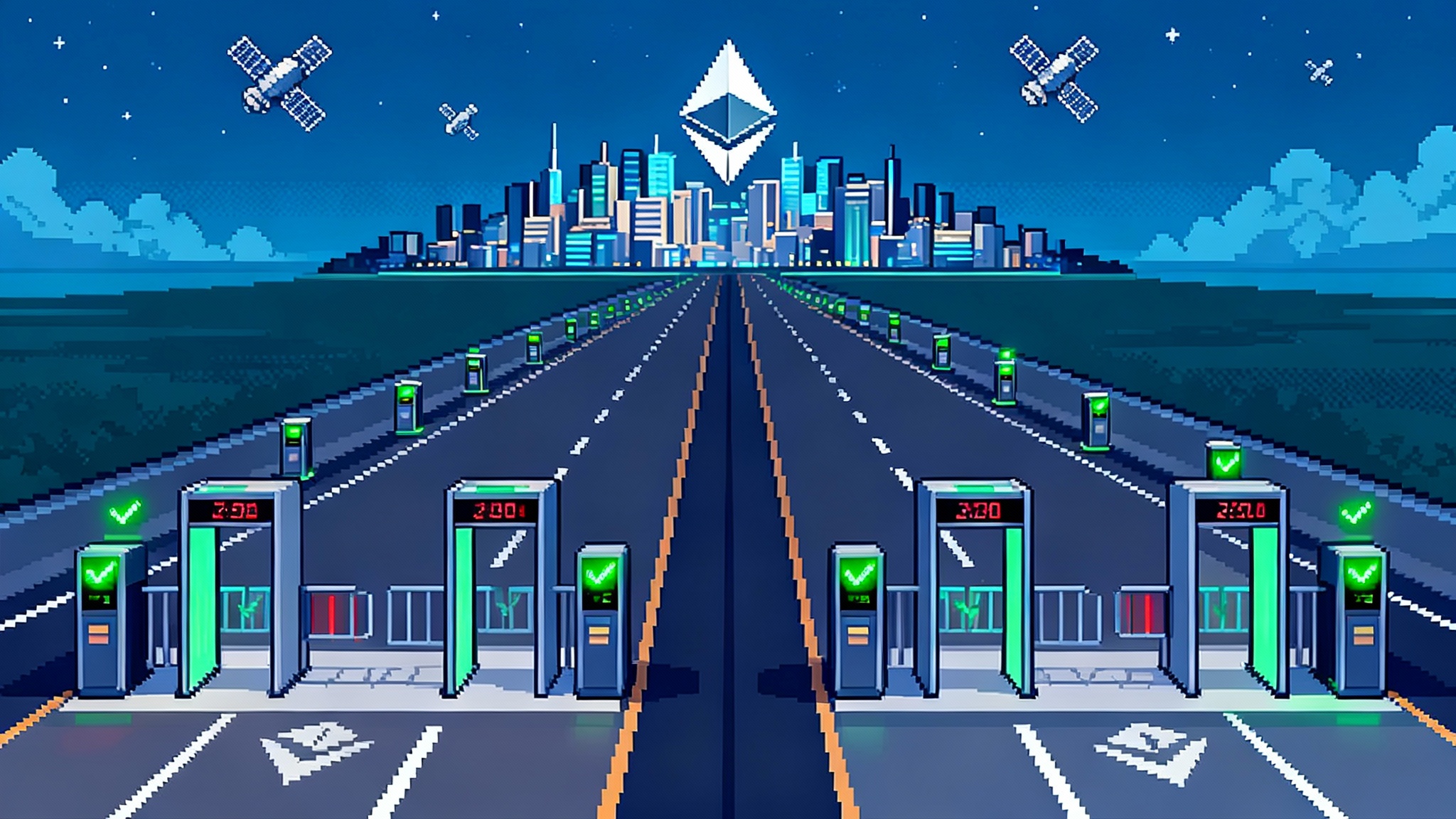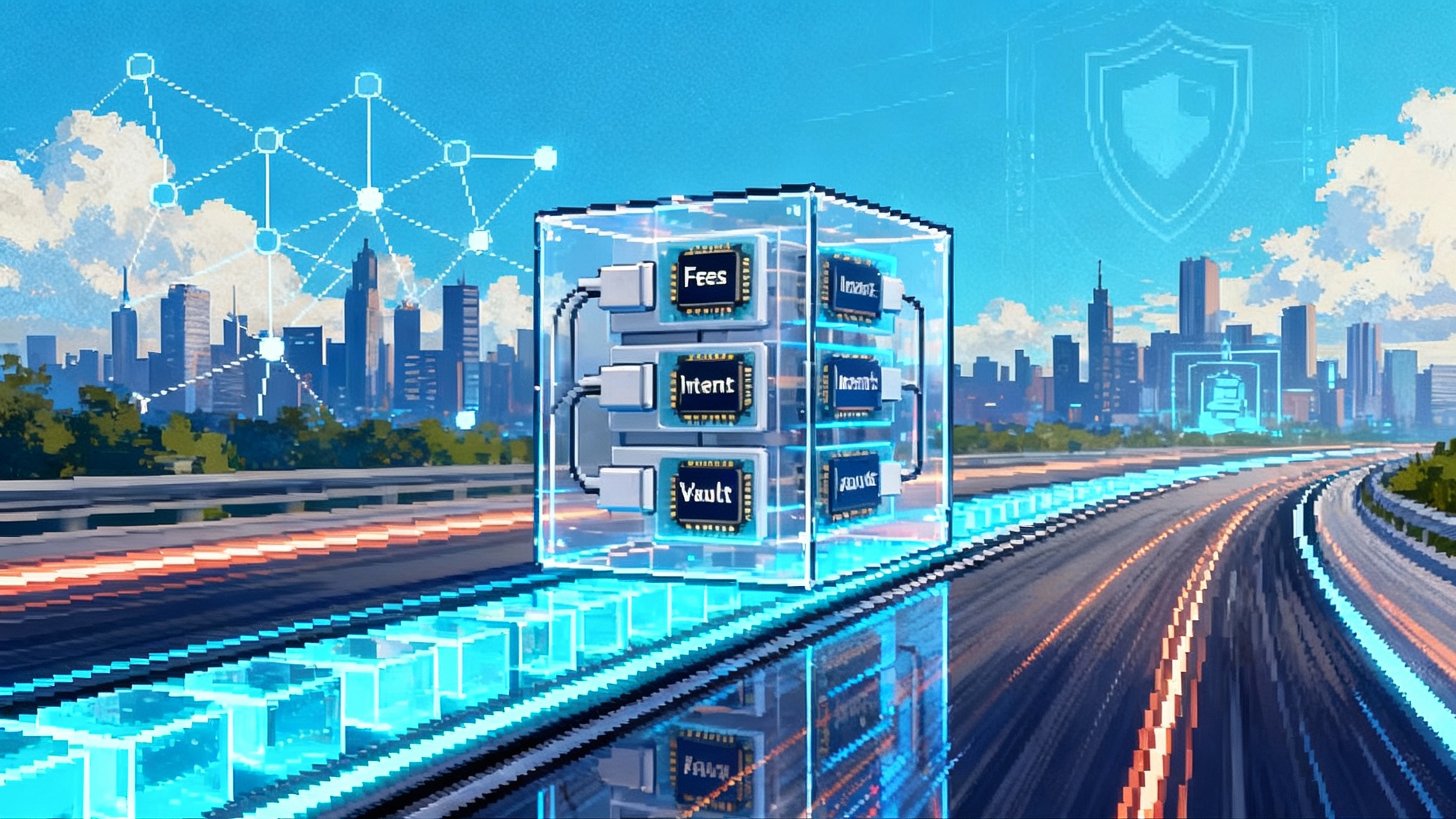Monad Mainnet on Nov 24, Rewriting the L1 vs L2 Playbook
Monad’s high throughput, EVM compatible Layer 1 is slated to go live on November 24 with an airdrop. If it delivers Solana level speed without abandoning Ethereum tooling, the launch could shift user flows, liquidity, and developer roadmaps.

Breaking: a Solana speed EVM lands on November 24
Monad will switch on its public mainnet and distribute its MON token on Monday, November 24, 2025 at 9 a.m. Eastern Time. A team member confirmed the Nov 24 launch and airdrop to The Block after a claim portal ran through early November. See the report on the Nov 24 launch and airdrop.
Why this is a big deal is simple. Developers can keep all their Ethereum habits and tools, then gain near Solana level performance. If Monad gets this right, it compresses the set of small inconveniences that push activity to Layer 2 systems today and it could redirect meaningful liquidity and attention back to a high performance Layer 1 that still speaks Ethereum’s language.
The current tax of Layer 2 life, in plain terms
Layer 2 networks exist because Ethereum prioritizes decentralization and security over raw throughput. They batch transactions, then post summaries to Ethereum. This is great for cost and scale, but the user experience carries taxes that add up:
- Bridge delay tax. Moving funds between chains or from Ethereum mainnet to a Layer 2 often takes minutes, sometimes hours. Fast bridges help, yet users still juggle risks, routes, and fees.
- Context switching tax. Wallets track many chains. Signing flows change. Gas tokens vary. Balances hide in different places. Each small friction increases drop off.
- Sequencer trust tax. Most Layer 2 systems rely on a small set of sequencers. They are improving, but users inherit their downtime or congestion patterns, as explored in permissionless shared sequencer layers.
- Fragmentation tax. Liquidity pools and order books split across chains. Traders chase the best depth and the lowest slippage instead of staying put.
A single high throughput Layer 1 that runs Ethereum smart contracts aims to shrink these taxes. If developers can redeploy their Solidity code and bring users without rethinking toolchains, the usual reason to reach for a Layer 2 becomes less automatic.
How Monad says it gets to speed without leaving EVM
The headline promise is throughput and low latency while staying compatible with the Ethereum Virtual Machine. Monad’s approach centers on parallel execution with optimistic scheduling. In everyday terms, think of processing a city’s rush hour by opening many lanes and letting cars go in parallel, while traffic control sorts out any collisions after the fact. Blocks remain linearly ordered like Ethereum, but Monad tries to execute many transactions at once, then resolves conflicts in a way that preserves the same end result you would get if you ran them one by one.
If you want the engineering flavor, the docs describe optimistic parallel execution, a custom database for Merkle storage on solid state drives, and just in time compilation of bytecode. You can read the overview of Monad parallel execution.
Two points matter for readers who do not live in the weeds:
- Compatibility means your favorite Solidity code and Ethereum tools can move over with minimal rewrites. That lowers developer switching costs.
- Parallelism plus clever scheduling is a performance bet that tries to keep the semantics developers expect while slashing latency and raising throughput.
Why a performance first EVM reopens the L1 vs L2 debate
For the last two years, the common script has been this: Ethereum is the settlement layer, Layer 2s are where users live, and Layer 1 alternatives must find niches. That script worked because users wanted speed and cost, and most Ethereum compatible Layer 1 chains were not fast enough to feel like a step change.
If Monad ships sustained low latency with heavy throughput, the mental model can shift. The key question becomes less about ideology and more about workflow and unit economics.
- User experience. If a user can mint, trade, and bridge with finality that feels close to web applications, and can do so in a wallet that behaves like their Ethereum wallet, the path of least resistance moves.
- Liquidity gravity. Market makers and arbitrageurs follow block times, inclusion predictability, and deep books. If volumes cluster where trades execute fastest with the least variance, pools migrate.
- Developer economics. Teams pay a real tax to maintain multichain deployments. If one chain offers the user base and the speed, it becomes rational to focus.
This does not eliminate the case for Layer 2s. It reframes it. Teams will ask whether rollup security, native Ethereum proximity, and modular flexibility offset any remaining Monad performance edge, alongside improvements like PeerDAS cuts L2 fees. For background on proofs maturing, see permissionless proofs hit L2s. The answer will differ by app class.
A simple metaphor for the shift
Imagine you run a food truck empire. Today you serve one city by parking across several busy suburbs. Each spot has loyal customers, and you shuttle supplies between them. The suburbs are your Layer 2s. Monad’s pitch is a new downtown boulevard where you can park a flagship truck that serves the same recipes but with faster service and a ten lane street that never clogs. If customers and suppliers both find the boulevard easier, many of your runs to the suburbs become optional. You may still keep a few trucks in key suburbs, but your roadmap centers on the boulevard.
Week one scorecard: what to watch and what it means
Set alerts for the first seven days. These metrics will tell you whether the boulevard fills up or stays quiet.
-
Bridge flows
What to track: net inflows by asset from Ethereum and top Layer 2s, plus flows from Solana. Watch aggregate bridge trackers, then cross check with custody and market maker desks.
Why it matters: early liquidity is the oxygen for trading and lending. A quick, steady inflow signals confidence from funds and active users, not just claim and dump.
Thresholds that impress: more than 300 million dollars in net inflow by day seven across stablecoins and ether wrapped assets suggests serious intent. A trickle below 50 million dollars suggests hesitation. -
DEX depth and spreads
What to track: top pools for stable pairs and ether wrapped pairs, plus the best order book spreads on any central limit order book that launches. Monitor slippage for a ten thousand dollar to one hundred thousand dollar trade.
Why it matters: deep books reduce price impact and bring market makers who attract more flow. Thin books kill momentum.
Thresholds that impress: sub ten basis points slippage for a one hundred thousand dollar stable swap and spreads under five basis points on the most traded pairs. -
Latency and inclusion
What to track: block times, transaction inclusion delay, and percent of transactions included within two blocks. Sample with a public explorer and your own test transactions.
Why it matters: traders and game studios care about predictability more than raw averages. Variance is the enemy.
Thresholds that impress: consistent sub second to near one second inclusion for simple transfers and swaps, with minimal variance during peak hours. -
MEV and tooling
What to track: availability of searcher relays, protection modes in popular wallets, and whether builders and proposers expose transparent routes for order flow. Look for teams shipping private routing, batch auctions, or intents based swaps during week one.
Why it matters: if builders ship reliable protection and searchers show up, serious trading follows. If not, users will fear sandwiching and stick to safer venues.
Thresholds that impress: early releases from at least two reputable MEV providers, plus a first party or ecosystem wide protection toggle in common wallets. -
Validator set dispersion
What to track: number of active validators, stake distribution across the top twenty, and geographic and cloud concentration.
Why it matters: decentralization reduces the chance that performance comes at the cost of resilience. A narrow validator set invites concern about liveness and censorship.
Thresholds that impress: no single operator with more than 15 percent of stake, at least three cloud providers in the top ten, and a healthy long tail of smaller operators.
Near term opportunities for teams ready to ship
If you are building, the next sixty days reward focus and speed. Here is a concrete checklist.
- Exchanges and aggregators. Seed deep pools for stablecoins and ether wrapped assets on day one, set maker budgets with strict inventory limits, and add Monad routes to your router as a first class target. Measure win rate and cost per fill against Solana and top Layer 2s.
- Perpetuals and options. Launch guarded beta markets with capped leverage, route oracle updates through redundant paths, and use frequent batch auctions to blunt early MEV games until more protection tooling arrives.
- Payments and commerce. Target low cost microtransactions like top ups and in app buys. Bundle a Monad first wallet flow that recognizes user balances on Ethereum and offers one click pull from a trusted bridge to cover gas. The goal is zero visible chain jargon after the first top up.
- Games and social. Use the low latency to ship moments that feel instantaneous. Cache aggressively at the edge, pre sign intents where safe, and make the first ten actions gas sponsored to remove new user friction.
- Infrastructure providers. Offer managed nodes with throttle guards and burst capacity for day one spikes. Ship an end to end stack that includes indexing, log based analytics, and native support for parallel execution traces so teams can debug hotspots.
- Security firms. Publish pre launch threat models and run real time monitoring for bridge impersonation, faucet drains, and approval phishing. Offer emergency revoke flows to wallets and front ends.
Risks and unknowns to keep front of mind
Success is not guaranteed. The following risks deserve sober attention.
- Security and client maturity. New chains harden in public. Fresh clients face edge cases and denial of service patterns that only live traffic reveals. A sensible posture is to use conservative limits, stage feature rollouts, and keep kill switches for exotic features until traffic patterns stabilize.
- Liquidity fragmentation. A new venue can split depth even if it is fast. Market makers may hesitate to hold large inventories until settlement and operational risks are well understood. Teams can mitigate by coordinating launch windows and concentrating early pairs.
- MEV dynamics. Parallel execution changes searcher strategies. If early protection is thin, users may meet more predation than they expect, then retreat to venues with proven defenses.
- Governance and upgrades. Rapid iteration is part of performance culture. That speed must be balanced with clear upgrade processes and predictable schedules, or risk rattling institutional users who prize stability.
How a fast EVM could compress Layer 2 taxes
If Monad maintains speed and inclusion predictability, the lived experience shifts in practical ways:
- One gas token, one mental model. Users transact with the same signing flow they know from Ethereum and major wallets. The constant switching between gas tokens fades.
- Bridges as top ups, not travel. Moving funds becomes an occasional refill instead of a weekly chore. This reduces the cognitive load that deters casual users.
- Less sequencer drama. With a Layer 1 validator set and fast blocks, users do not inherit the single sequencer bottlenecks that can stall parts of the Layer 2 stack.
- Fewer deployment branches. Teams can cut maintenance cost by focusing on one high performance EVM deployment instead of three or four Layer 2 forks.
What a win would look like by New Year
By the end of December, a realistic success pattern looks like this:
- Daily active addresses in the high six figures, with repeat interactions from the same cohort rather than one time claimants.
- Stablecoin float above one billion dollars with steady inflow from Ethereum and at least one major Layer 2.
- Two or more name brand apps treating Monad as a primary venue for new features rather than a mirror of their Ethereum deployment.
- Visible MEV protections in common wallets and early research posts from searchers and builders about parallel execution dynamics.
A neutral outcome would show decent usage but shallow depth and hesitant market makers. A miss would be a claim and dump pattern, empty pools, and scattered outages that shake confidence.
The accelerationist view: where this pushes web3 next
Performance first EVM chains turn the conversation from careful modularity to impatient product loops. If users can get speed that feels native and developers can reuse their code and tools, then iteration cycles shrink. Expect more real time apps that depend on instant feedback. Expect teams to unify fragmented deployments and build fewer bridges into their core flows. Expect wallets to become intent routers that hide chain choice entirely.
This does not replace the modular vision. It pressures it to compete on user experience rather than diagrams. A healthy future will likely include both fast EVM Layer 1s and specialized Layer 2s. The race will be won by the venues that make the next one million users forget which chain they are on.
Bottom line
Monad’s mainnet and airdrop are a clean test of whether Solana class performance can live inside Ethereum’s mental model. If week one data shows deepening liquidity, predictable sub second inclusion, growing validator dispersion, and credible MEV tooling, developers will have a new default choice for where to launch. If those signals are weak, the L2 first strategy will remain the safe play. Either way, the next few weeks will reveal whether a performance first EVM can bend web3 toward a simpler, faster, and more legible user experience.








